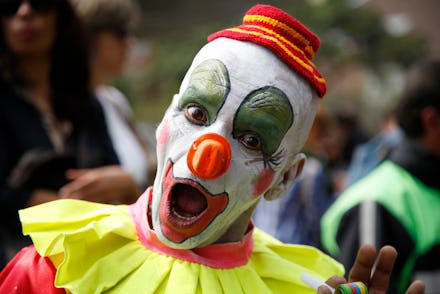Science Has Figured Out What Makes Some People Creepy

When something feels off, but isn't exactly life-threatening and not entirely weird, what is it? Creepy. Researchers at Knox College — in the first empirical study of creepiness — have now discovered the parameters for what makes someone likely to be perceived as creepy. The study surveyed 1,341 people, who were an average age of 29, Slate reported. The survey had participants rate how creepy 44 different behaviors and habits were.
As it turns out — and as everyone has probably encountered at some point in time — creepiness is felt when someone interacts with something that's "outside the norm, like a person with idiosyncratic behavioral patterns, unusual physical characteristics or a tendency to over- or underemote," according to Slate. The person doesn't know if they should interpret the interaction as a threat, and thus is creeped out. "Atypical expressions" could be one reason, according to a neurologist who wrote a column for Psychology Today, why many people describe Republican presidential candidate Texas Sen. Ted Cruz as creepy.
Behaviors considered creepy according to the survey were akin to the creepy uncle trope, like constantly licking their lips or bringing up the same topic (usually sex) over and over in conversation.
The creepiest features were having greasy hair, unclean clothes and a "peculiar smile," according to Slate.
The study also found that men were more likely to be considered creepy than women, and women more often associated "sexual threat with creepiness." Unwarrantedly being hit on or encroachment on their personal space are such examples, according to Slate. Seventy-five percent of the study's participants were women, thus the findings could possibly have been different if more men were involved.
The survey participants also chimed in with what they felt were the creepiest jobs, and — no surprise here — clowns were one of the top responses. Also included were taxidermists and funeral directors, according to Slate. The least creepy occupation was meteorologist.